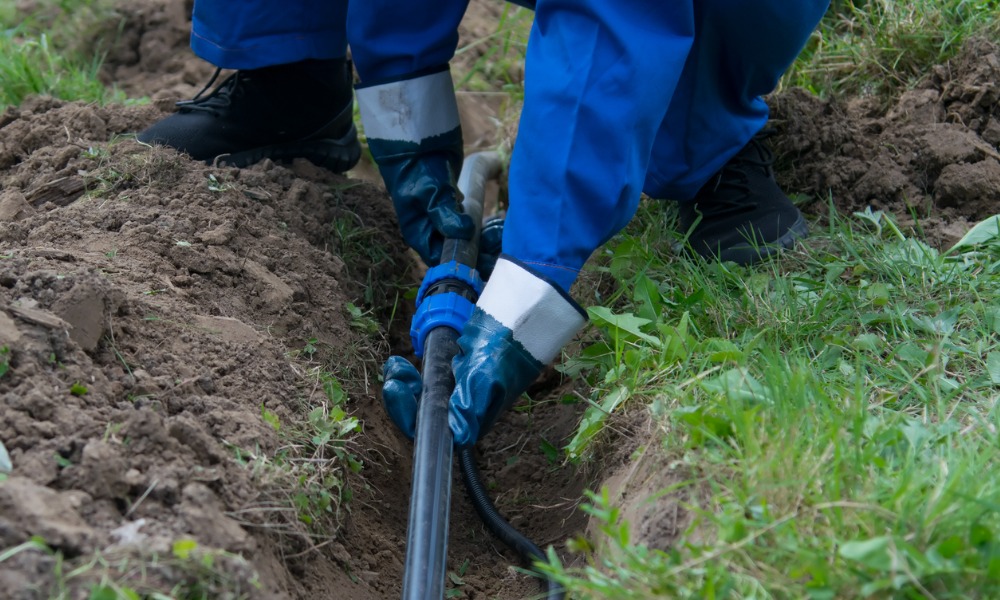
Supreme Court overturns lower court's decision to deny worker's claim

The Supreme Court of Victoria recently dealt with a case involving a worker's claim for compensation due to a back injury sustained during his employment. The case highlights the complexities of workplace injury claims and the interpretation of 'serious injury' under Victorian law.
The dispute centred around whether the worker's back injury met the threshold of a 'serious injury' as defined by the Workplace Injury Rehabilitation and Compensation Act 2013.
The court's decision provides valuable insights into how such cases are evaluated, particularly when assessing the long-term impacts of workplace injuries on an individual's quality of life and employment prospects.
The worker was employed as a lining installer between March 2002 and November 2016. His job involved cleaning domestic sewerage pipes and installing membranes or sleeves inside these pipes.
The work was described as heavy and strenuous, requiring the worker to move heavy equipment, operate machinery that placed strain on his body, and often work in a bent-over position.
In August 2011, the worker experienced back pain while operating a machine at work. He sought medical attention and submitted a WorkCover claim, which was accepted by his employer. The worker continued to experience episodes of back pain at work until the business closed in 2016.
In April 2022, the worker filed a motion in the County Court seeking leave to commence a common law proceeding for damages related to his workplace injuries. This application was made under section 335 of the Workplace Injury Rehabilitation and Compensation Act 2013.
The central issue before the court was whether the worker's injury constituted a 'serious injury' under the Act. Specifically, the court had to determine if the injury resulted in "permanent serious impairment or loss of a body function" of the lumbar spine.
The worker's claim was confined to seeking leave for damages for 'pain and suffering' within the meaning of section 325 of the Act.
The worker's claim was initially dismissed in the County Court. The judge concluded that while the worker experienced pain and impairment, these consequences did not meet the threshold of being "very considerable" as required by the Act. The worker subsequently sought leave to appeal this decision in the Supreme Court of Victoria.
The court considered extensive medical evidence, including reports from several specialists. A neurosurgeon said that the worker's employment had aggravated an underlying degenerative condition of the lumbosacral disc.
He stated:
"[The worker’s] condition has essentially stabilised at this time, although he will be prone to degenerative progression with a risk of progressive disc prolapse at the L4-5 motion segment which could be difficult to determine and predict."
Another specialist occupational physician, noted that the worker "has restricted capacity for bending, lifting, walking long distances and for prolonged sitting and standing; his sleep quality is poor and broken; and he feels tired and lethargic during the day."
The worker testified about the ongoing impact of his injury on his daily life. He described experiencing almost constant back pain and difficulties with sleep, stating:
"I have back pain almost all the time. It is basically the same as it was when I swore my last affidavit. Even when it is not so bad, I feel like I am on eggshells waiting for it to go again."
The Supreme Court found that the County Court judge had erred in his assessment of the worker's condition. The court emphasised that the worker's stoicism in dealing with his pain should not work against him in the evaluation of his injury's severity.
The court said:
"A stoic applicant who has been prepared to put up with pain and suffering and make the best of his or her situation should not be treated less favourably than an applicant who, being of less strength of character, simply resigns himself or herself to the injury."
In overturning the lower court's decision, the Supreme Court concluded:
"Having reviewed the evidence for ourselves, we are satisfied that the very considerable test has been met in this case. It is plain from the totality of the evidence that the applicant has suffered, and will continue to suffer, consequences in the form of pain and suffering and loss of enjoyment of life which are more than marked, more than significant, and which can fairly be described (when judged by comparison with other cases in the range of possible impairments or losses of a body function) as being at least very considerable."
The court also said:
"Further, the specialist medical evidence is that the applicant 'will be prone to degenerative progression with time', leading to the real risk (if not likelihood) of the need for surgical intervention. Thus, there can be little doubt that the very considerable effects of the applicant's injury are 'permanent', in the sense that they are likely to last for the foreseeable future."
This decision underscores the importance of considering the full impact of workplace injuries on an individual's life, beyond just their ability to work.
It also highlights the need for a comprehensive evaluation of medical evidence and personal testimony in determining the severity of an injury under workplace compensation laws. The case serves as a significant precedent in interpreting the 'serious injury' threshold in Victorian workplace injury claims.